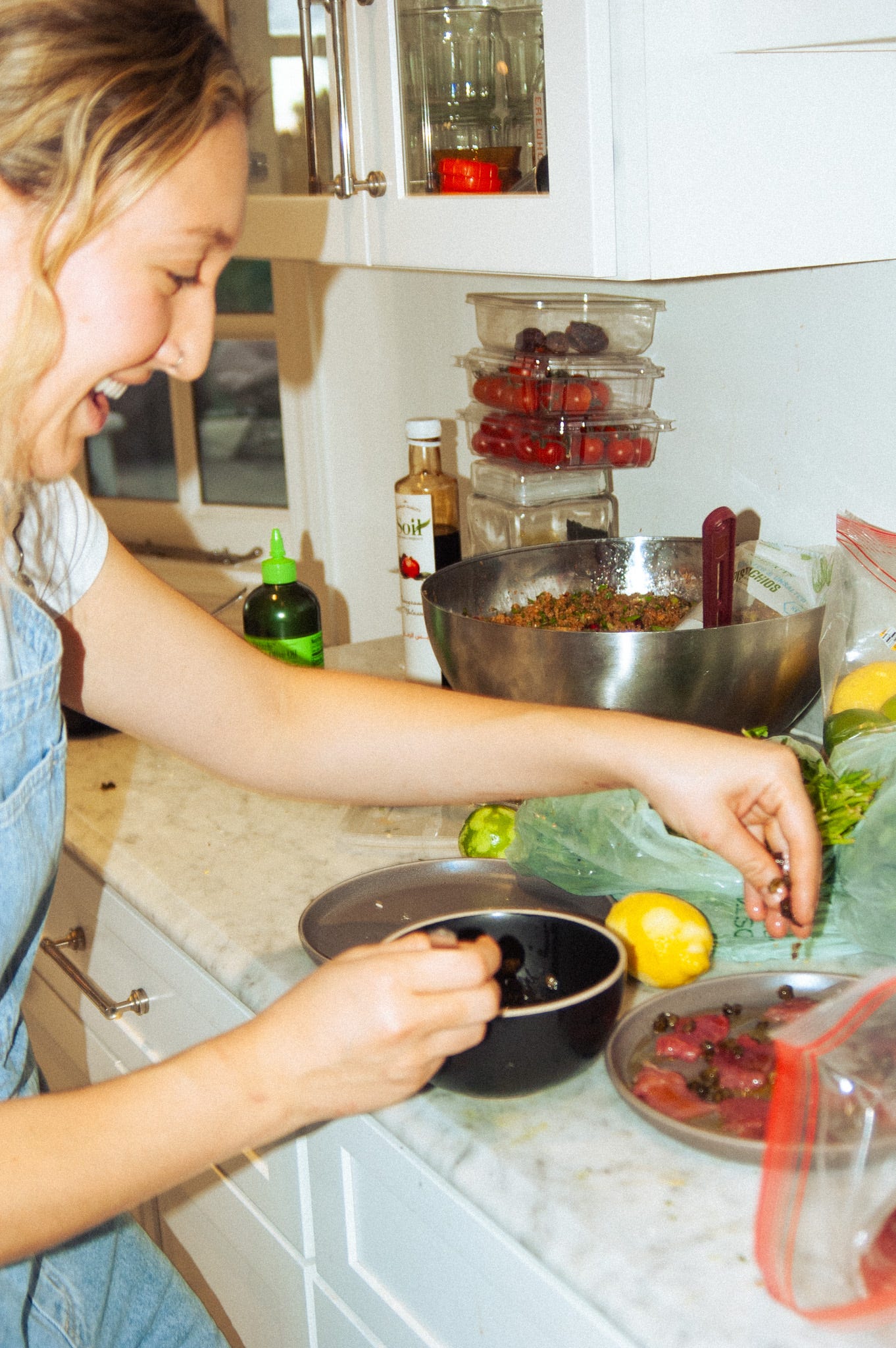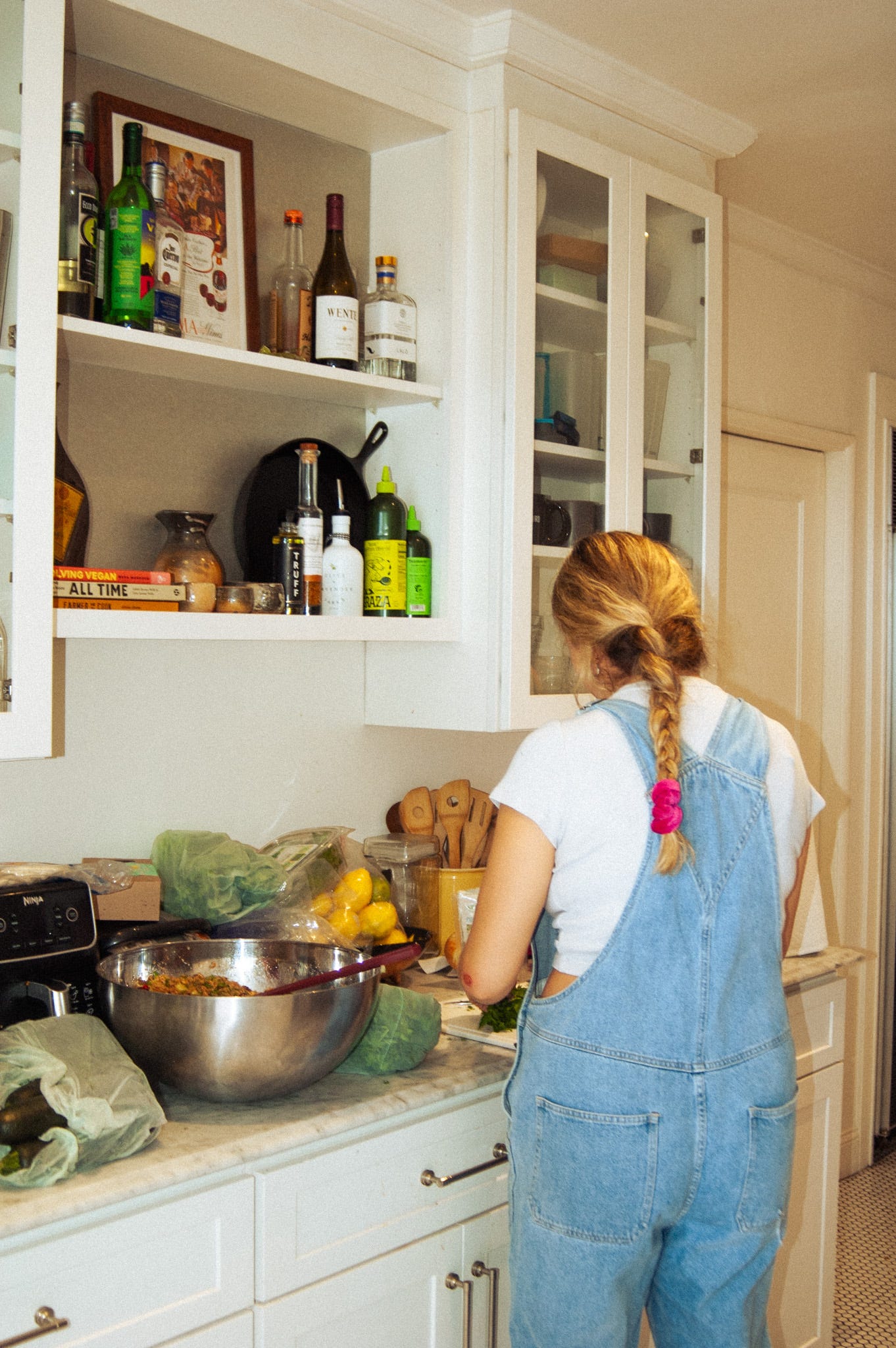My Kitchen Commandments
Low-effort and easily applicable kitchen hacks that will, I promise, make your life better
Home cooking can be complicated and intimidating, I get it. I think those feelings really stem from a lack of confidence in skill or knowledge of cooking basics. It’s kind of like the fear of the unknown theory – i.e., the fear of potentially burning your chicken, not having the right ingredients on hand or having some unplanned kitchen disaster. I really do believe that the more you know, the more confident you’ll be in the kitchen, and your love for cooking will grow as a byproduct.
Before working in a professional kitchen or going to culinary school, I thought I had cooking basics down pat. Turns out, I was doing (mostly) everything wrong and I have learned SO (and I mean, soooo) much since then. The purpose of today’s post is to give you some low-effort and easily applicable kitchen hacks that will, I promise, make your life better, and hopefully alleviate some of your kitchen stress and boost your cooking confidence.
If you’re going to be doing a lot of chopping, I recommend three things. First things first, get yourself a large cutting board – don’t try to do it on a silly little one. It’s going to get messy if you try to chop a bunch of things on a sad little board. And speaking of messy, a major chef hack is to put some sort of trash bowl on your counter. It’s less time consuming and cleaner to use that bowl right next to you for any scraps than to walk to your trash bin every time. Lastly, I’d recommend investing in something called a bowl scraper. They’re inexpensive and make life much easier to help you gather all of your chopped herbs or veggies from your board and to your bowl or pot.
Don’t be afraid of salt! Salt isn’t just a salting agent - it’s FLAVOR. If something tastes bland, odds are it doesn’t have enough salt to bring out any flavor. This is why you may wonder why restaurant food tastes better than regular food – it’s because chefs are constantly tasting their dishes for salt content to make sure it's spot on. If you’re ever following a recipe, odds are the author or chef was using Diamond Crystal kosher salt, which is an industry standard.
Know what kind of knife to use for different tasks. This could seem obvious, but I was someone who used their large chef’s knife for everything. In a perfect world, you have two decent quality knives: an 8-inch or 10-inch chef’s knife, and a small paring knife or petty knife. Use your smaller knife (in this case, paring or petty knife) for cutting small ingredients – i.e., tomatoes, garlic, etc., and your large knife for the heavier lifting, chopping and dicing. The idea here is, it actually takes more time to cut a little cherry tomato with your large knife because the sizing and proportions with your hand is awkward. If you’re looking into purchasing some newbies, this set is a decent price-point for a quality knife duo. My first good quality knife was a Wusthof and I still have it – I like to refer to it as my ole’ reliable. I just recently invested in some Japanese knives, but those can get a bit pricey.
Mise en place. You’ve maybe heard chefs use this fancy term, “mise en place”, which is a French culinary term meaning “putting in place” or “set up”. This is one of the first things I learned in culinary school, and the purpose behind it is to keep all of your ingredients organized, your workstation clean and maintain time efficiency. For example, if you’re making a soup, chop all of your veggies and aromatics, measure out your stock and have your spices ready to go – so once it’s time to cook, you don’t need to be doing any cutting, chopping or measuring. Do I do this every single day for everything I eat? Absolutely not. But, for bigger kitchen projects it’s a life saver.
Cook with good quality oil or butter. If there’s something to spend an extra dollar or two in the grocery store, in my opinion, it’s olive oil or butter. Think about it: these ingredients go into basically EVERYTHING you cook. You want them to be good quality for both taste and health. For olive oil, I lean towards ones that are 100% of one region (for example, extra virgin olive oil that is 100% Californian). I’m a big fan of Graza, and not just for their impeccable marketing, but because I really like the taste of their oils. For butter, I prefer to use a high fat content butter that is grass fed. Kerrygold is also delicious and great for baking, and this gorgeous, amazing and stunning french butter is a luxurious option for toast and topping.
I know this sounds annoying, but try your best to clean as you go. There’s not much else to say about this. It truly makes life easier. Get your dishwasher (if you have one) empty before you start and just keep popping those dirty dishes in there.
I think that’s all for now. I don’t want to overwhelm you. But, I think my next post will be about the basic kitchen tools I think everyone needs… because there’s a lot of stuff you actually DON’T need. So, stay tuned for that!




Agreed- I use my big knife too much. Selecting which ones to buy is overwhelming. Very helpful information. Having everything measured and prepped ahead of time is a must - you can focus on the cooking part. I learned that in Home Ec a thousand years ago. thanks Mrs. Corbiere! Also, love to learn about what pans to buy. This is always a head scratcher - I want to know what kinds and what sizes. Keep it coming!
Salt game go crazy